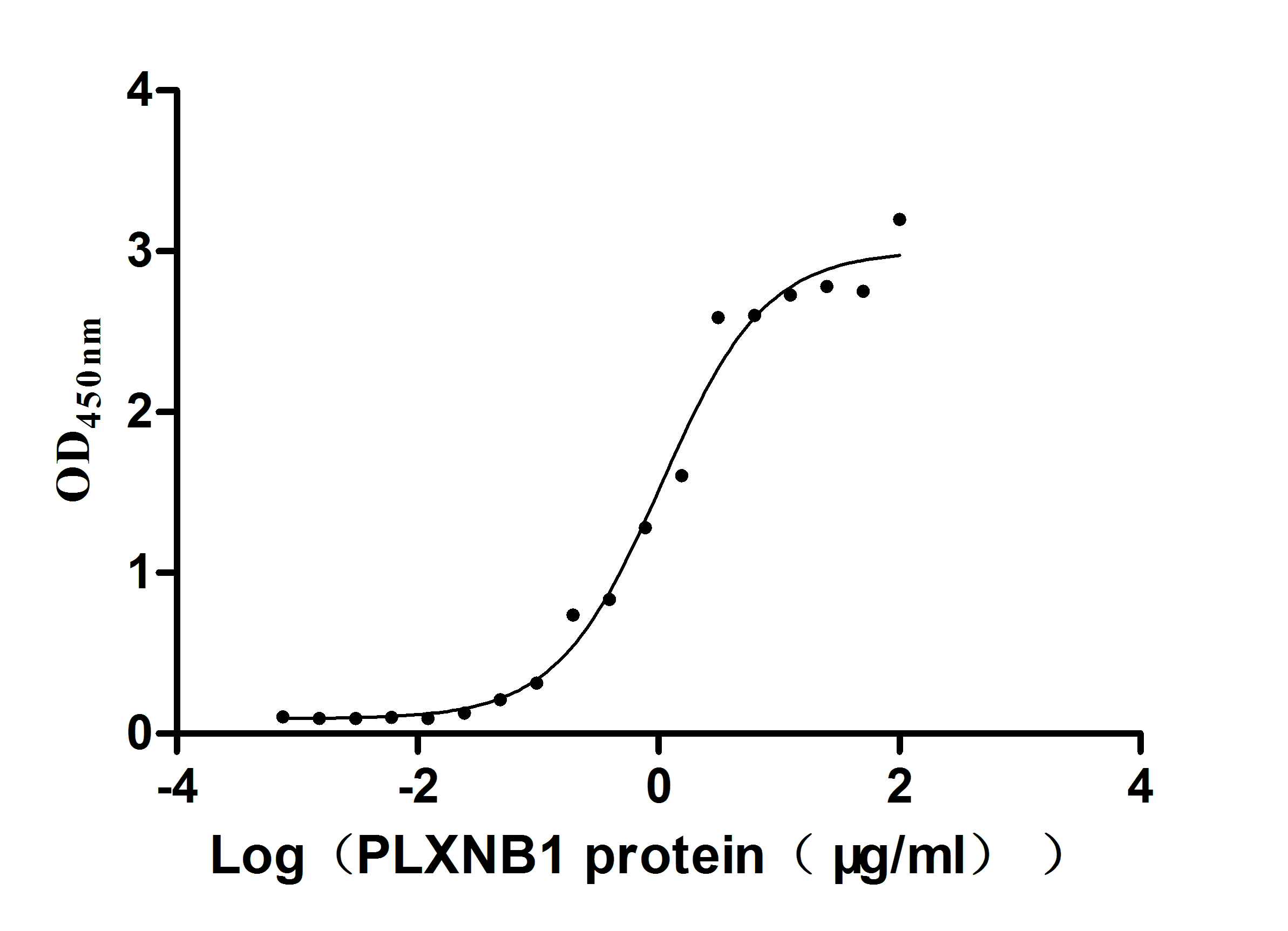Recombinant Rat Free fatty acid receptor 1 (Ffar1)
-
货号:CSB-CF008604RA
-
规格:
-
来源:in vitro E.coli expression system
-
其他:
产品详情
-
基因名:
-
Uniprot No.:
-
别名:Ffar1; Gpr40; Free fatty acid receptor 1; G-protein coupled receptor 40
-
种属:Rattus norvegicus (Rat)
-
蛋白长度:full length protein
-
表达区域:1-300
-
氨基酸序列MDLPPQLSFALYVSAFALGFPLNLLAIRGAVSHAKLRLTPSLVYTLHLACSDLLLAITLP LKAVEALASGVWPLPLPFCPVFALAHFAPLYAGGGFLAALSAGRYLGAAFPFGYQAIRRP CYSWGVCVAIWALVLCHLGLALGLEAPRGWVDNTTSSLGINIPVNGSPVCLEAWDPDSAR PARLSFSILLFFLPLVITAFCYVGCLRALVHSGLSHKRKLRAAWVAGGALLTLLLCLGPY NASNVASFINPDLEGSWRKLGLITGAWSVVLNPLVTGYLGTGPGQGTICVTRTPRGTIQK
Note: The complete sequence including tag sequence, target protein sequence and linker sequence could be provided upon request. -
蛋白标签:N-terminal 10xHis-tagged
-
产品提供形式:Liquid or Lyophilized powder
Note: We will preferentially ship the format that we have in stock, however, if you have any special requirement for the format, please remark your requirement when placing the order, we will prepare according to your demand. -
缓冲液:Lyophilized from Tris/PBS-based buffer, 6% Trehalose, pH 8.0
-
储存条件:Store at -20°C/-80°C upon receipt, aliquoting is necessary for mutiple use. Avoid repeated freeze-thaw cycles.
-
保质期:The shelf life is related to many factors, storage state, buffer ingredients, storage temperature and the stability of the protein itself.
Generally, the shelf life of liquid form is 6 months at -20°C/-80°C. The shelf life of lyophilized form is 12 months at -20°C/-80°C. -
货期:Basically, we can dispatch the products out in 1-3 working days after receiving your orders. Delivery time may differ from different purchasing way or location, please kindly consult your local distributors for specific delivery time.Note: All of our proteins are default shipped with normal blue ice packs, if you request to ship with dry ice, please communicate with us in advance and extra fees will be charged.
-
注意事项:Repeated freezing and thawing is not recommended. Store working aliquots at 4°C for up to one week.
-
Datasheet & COA:Please contact us to get it.
相关产品
靶点详情
-
功能:G-protein coupled receptor for medium and long chain saturated and unsaturated fatty acids that plays an important role in glucose homeostasis. Fatty acid binding increases glucose-stimulated insulin secretion, and may also enhance the secretion of glucagon-like peptide 1 (GLP-1). May also play a role in bone homeostasis; receptor signaling activates pathways that inhibit osteoclast differentiation. Ligand binding leads to a conformation change that triggers signaling via G-proteins that activate phospholipase C, leading to an increase of the intracellular calcium concentration. Seems to act through a G(q) and G(i)-mediated pathway. Mediates the anti-inflammatory effects of omega-3 polyunsaturated fatty acids (PUFAs) via inhibition of NLRP3 inflammasome activation.
-
基因功能参考文献:
- The results indicate that Pollen Typhae total flavone exerts a protective role against PA-induced impairment of GSIS involving GPR40 signaling in INS-1 cells. PMID: 28731171
- GPR120 suppresses adipose tissue lipolysis and synergizes with GPR40 in antidiabetic efficacy PMID: 28583918
- Mercaptoacetate blocks fatty acid-induced GLP-1 secretion in male rats by directly antagonizing GPR40 fatty acid receptors to control hunger/satiety. PMID: 26791830
- opposite effects of GPR120 and GPR40 may be involved in the cell motile activity stimulated by ethionine in WB-F344 cells PMID: 25446111
- Mercaptoacetate and fatty acids exert direct, nonmetabolic actions on GPR40 membrane receptors which may affect feeding. PMID: 24760994
- Combination therapy with GPR40 agonist TAK-875 and metformin could be a valuable strategy for glycaemic control and beta-cell preservation in type 2 diabetes. PMID: 23848179
- FFAR1/GPR40 activation in the presence of low FA increased flux into glycerolipids and enhanced glucose oxidation. PMID: 24675078
- GPR40 protein is interactively modulated by both free fatty acids and glucose in obesity-prone and non-obese type 2 diabetic rats. PMID: 23911664
- Free fatty acid (FFAs)-induced suppression of basal and glucose-stimulated insulin secretion was attenuated by an increase in the degree of unsaturation of the FFAs and GPR40 expression in response to FFA treatment in INS-1 cells. PMID: 22332921
- GPR40/FFA1 influences both insulin and glucagon secretion in rat islets, but only insulin secretion in human islets. PMID: 22106100
- Data suggest that sulfonylureas could replace glucose to support GPR40-mediated enhancement of insulin secretion. PMID: 19815053
- Free fatty acids regulate insulin secretion from pancreatic beta cells through GPR40 PMID: 12629551
- These results demonstrate that OA interacts with GPR40 to increase [Ca(2+)](i) via PLC- and L-type Ca(2+) channel-mediated pathway in rat islet beta-cells, which may be link to insulin release. PMID: 15914509
- GPR40 promotes Ca2+ influx through up-regulation of L-type calcium channels pre-activated by glucose and membrane depolarization PMID: 16081037
- GPR40 responded to fatty acids with different on-rates, and could be occupied by endogenous agonists before assay, masking the pharmacology of the receptor PMID: 17200419
显示更多
收起更多
-
亚细胞定位:Cell membrane; Multi-pass membrane protein.
-
蛋白家族:G-protein coupled receptor 1 family
-
组织特异性:Expressed abundantly in pancreatic beta cells.
-
数据库链接:
KEGG: rno:266607
STRING: 10116.ENSRNOP00000028533
UniGene: Rn.86438
Most popular with customers
-
Recombinant Human 5'-nucleotidase (NT5E) (Active)
Express system: Mammalian cell
Species: Homo sapiens (Human)
-
Recombinant Human Plexin-B1 (PLXNB1), partial (Active)
Express system: Mammalian cell
Species: Homo sapiens (Human)
-
Recombinant Mouse Claudin-18 (Cldn18)-VLPs (Active)
Express system: Mammalian cell
Species: Mus musculus (Mouse)
-
Recombinant Human Oncostatin-M (OSM), partial (Active)
Express system: Mammalian cell
Species: Homo sapiens (Human)
-
Recombinant Human CD81 antigen (CD81), partial (Active)
Express system: Mammalian cell
Species: Homo sapiens (Human)
-
Recombinant Human Interleukin-1 receptor accessory protein (IL1RAP), partial (Active)
Express system: Mammalian cell
Species: Homo sapiens (Human)
-
Recombinant Human Mucin-13(MUC13),partial (Active)
Express system: yeast
Species: Homo sapiens (Human)




-AC1.jpg)














